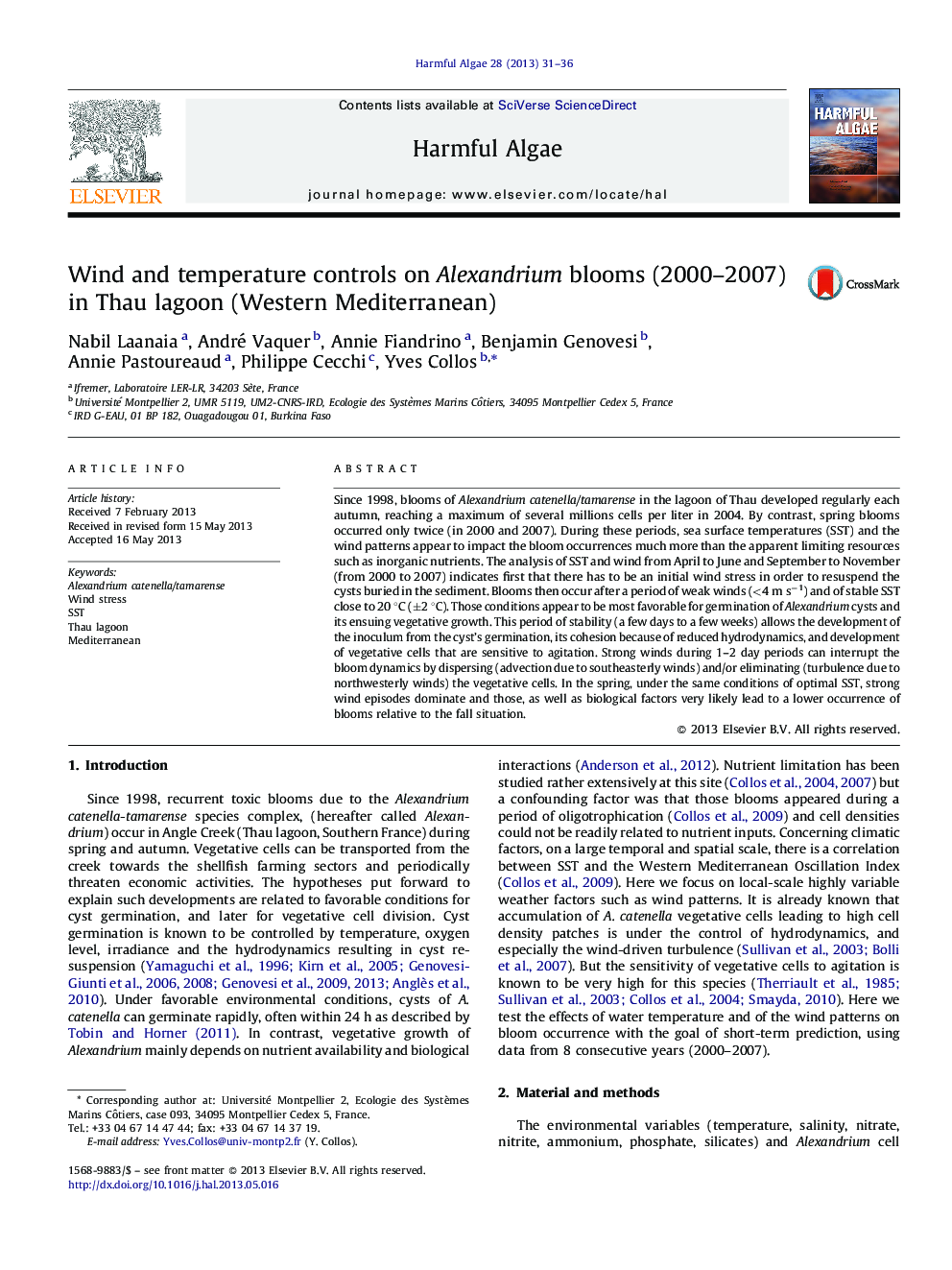| کد مقاله | کد نشریه | سال انتشار | مقاله انگلیسی | نسخه تمام متن |
|---|---|---|---|---|
| 4545446 | 1626943 | 2013 | 6 صفحه PDF | دانلود رایگان |

• Wind patterns override factors controlling Alexandrium catenella blooms in Thau lagoon.
• Surface water temperature impacts the seasonal development of blooms (spring and fall).
• Southeasterly winds disperse the blooms, northwesterly winds terminate the blooms.
• Maximal cell densities of Alexandrium catenella are related to calm period durations.
Since 1998, blooms of Alexandrium catenella/tamarense in the lagoon of Thau developed regularly each autumn, reaching a maximum of several millions cells per liter in 2004. By contrast, spring blooms occurred only twice (in 2000 and 2007). During these periods, sea surface temperatures (SST) and the wind patterns appear to impact the bloom occurrences much more than the apparent limiting resources such as inorganic nutrients. The analysis of SST and wind from April to June and September to November (from 2000 to 2007) indicates first that there has to be an initial wind stress in order to resuspend the cysts buried in the sediment. Blooms then occur after a period of weak winds (<4 m s−1) and of stable SST close to 20 °C (±2 °C). Those conditions appear to be most favorable for germination of Alexandrium cysts and its ensuing vegetative growth. This period of stability (a few days to a few weeks) allows the development of the inoculum from the cyst's germination, its cohesion because of reduced hydrodynamics, and development of vegetative cells that are sensitive to agitation. Strong winds during 1–2 day periods can interrupt the bloom dynamics by dispersing (advection due to southeasterly winds) and/or eliminating (turbulence due to northwesterly winds) the vegetative cells. In the spring, under the same conditions of optimal SST, strong wind episodes dominate and those, as well as biological factors very likely lead to a lower occurrence of blooms relative to the fall situation.
Journal: Harmful Algae - Volume 28, August 2013, Pages 31–36